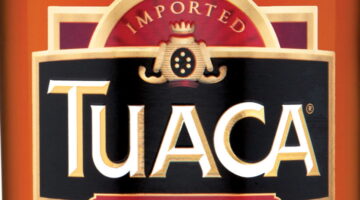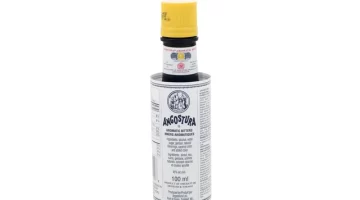Padró Rojo Clasico Vermouth Review
Padró Rojo Clasico Vermouth Review from Travel Distilled
It’s confession time. In all my years of enjoying spirits and cocktails, I’ve never once tasted vermouth on its own. I must have drunk quite a bit of it, as it’s an ingredient in some of my favourite cocktails like the Martini, the Manhattan and the Negroni. It’s just not the kind of drink I’d consider ordering on its own even though it’s a popular aperitif, especially in Turin where it originated.
What is Vermouth?
Vermouth is basically a fortified wine, like sherry or port, but there are various recipes for producing it, with each maker having their own secret ingredients. Spirit of some kind is added to the original wine, and so too are various botanicals such as herbs, spices, flowers and seeds.
The most popular vermouth is a sweet vermouth, which is normally sweetened with either cane sugar or caramelised sugar, though there are several different styles of vermouth including dry vermouth, red, rosé, amber and others. Italy and France are the main vermouth producers although it’s also made in other countries, including the UK, USA and Spain.
Spanish Vermouth
It was a Spanish vermouth from Padró and Co, which has been in business since 1886 in Tarragona, that I was recently given the chance to try. Daniel Padró Porta and his wife Rosa Valldosera began by making wines and liqueurs which they sold from the back of a cart. With each generation the company expanded, and expanded its list to include vermouths.
How Should I Drink Vermouth?
I’m not the expert so let Padró and Co tell you:
https://vermouthpadro.com/en/how-should-i-drink-vermouth/
Roso Clasico
Padró and Co has a range of vermouths and it was the Roso Clasico that came my way. It’s a spectacular bottle with a pink and gold swirly design so it doesn’t surprise me that as well as winning awards for what’s in the bottle, the bottle itself has won several gold medals.
The Rojo Clasico is made from macabeo and xarello grapes harvested from Padró’s own vineyards. The macabeo grape is commonly used to make white Rioja, while xarello is one of the white grapes traditionally used to make cava. That’s a pretty good pedigree to start with.
Sugar is then added to the wine with an initial infusion of mountain plants (roots and flowers). The wine is then aged for two years in 50-year-old chestnut barrels, which were originally used for transporting wine. This helps give the vermouth its lovely, rich ruby colour. After two years there’s another infusion, this time a blend of local plant bark and roots, which give the vermouth its bitterness.
Padró Rojo Clasico Vermouth Review
It was this bitterness that first surprised me. On the nose it’s very spicy, with a medicinal hint as well, and smells a little bit sweet. Tasting it, though, I found it very bitter, which I wasn’t expecting. It was also fresh and spicy, with touches of cloves and cinnamon, but it was so bitter I thought I would be struggling to finish it. I checked out other reviews and tasting notes, which said people found it creamy and only slightly bitter, so I guess my palate is set on super-sensitive when it comes to bitter flavours.
However, I’m nothing if not persistent, and I’ve found very few spirits I don’t like, so I persevered. So did my wife and fellow-taster. She started a second glass and declared it to be getting better. I did that too, and she was right. The bitterness was no longer such a surprise, and I was able to appreciate more the herby spiciness of the drink.
The Perfect Serve
The company recommends a Royal Devil as the perfect way to enjoy the Rojo Clasico, and as we had all the ingredients handy, I made us a couple. Delicious! The citrus of the lemon and the power of the tabasco and the Lea & Perrins helped create a great little vermouth cocktail. I continued to try the vermouth neat, though, and was slowly won over by it, able to enjoy its natural herbs and spices, and see why the Italians and Spaniards enjoy it as a Sunday lunch aperitif.

More Information
See the Padró and Co website.
More Information
See the Padró and Co website.















